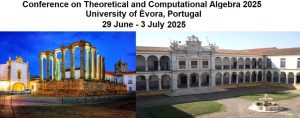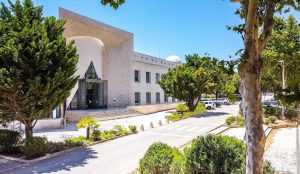Conferences & Workshops

Conference on Theoretical and Computational Algebra 2025
The 2025 Conference on Theoretical and Computational Algebra will be held in University of Évora, ...

Computability in Europe (CiE)
Computability in Europe (CiE) will be held at Faculdade de Ciências da Universidade de Lisboa, Lisbon, ...

17th Conference on Dynamical Systems Applied to Biology and Natural Sciences, DSABNS 2026
The 17th Conference on Dynamical Systems Applied to Biology and Natural Sciences, DSABNS 2026, will ...

93rd Séminaire Lotharingien de Combinatoire
The 93rd Séminaire Lotharingien de Combinatoire will be held in High-Performance Rowing Centre, Pocinho, Portugal, ...
LYMC 2025 – Lisbon Young Mathematicians Conference
The Lisbon Young Mathematicians Conference 2025 - LYMC 2025 will be held at Instituto Superior ...

2nd Semigroup Journey
The 2nd Semigroup Journey will be held in Gambelas Campus of the University of Algarve, ...
NOVA Math Industry Day 2024
The NOVA Math Industry Day, will be held on October 2, 2024, at 14:30, room ...

NOVA Math – UNIDEMI Talks – 9th Edition
NOVA MATH – UNIDEMI TalksDate | Time: July 10, 2024 | 15h00 – 16h00Location: Building VII, Room 1.1115:00 – 15:15 Marta ...
Calendar
January 2026 |
||||||
|---|---|---|---|---|---|---|
| Mon | Tue | Wed | Thu | Fri | Sat | Sun |
|
1
|
2
|
3
|
4
|
|||
|
5
|
6
|
7
|
8
|
9
|
10
|
11
|
|
12
|
13
|
14
|
15
|
16
|
17
|
18
|
|
19
|
20
|
21
|
22
|
23
|
24
|
25
|
|
26
|
27
|
28
|
29
|
30
|
31
|
|
